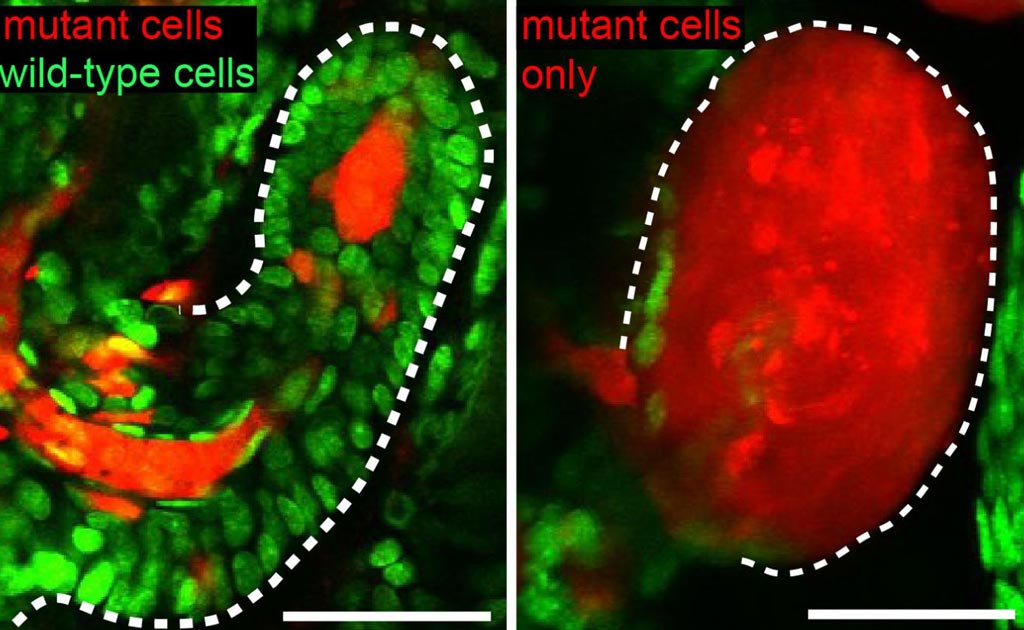Normal Skin Resists and Rejects Cancerous Growth
By LabMedica International staff writers
Posted on 14 Aug 2017
While examining the biological effects that emerge from interactions between cancerous cells and neighboring normal skin cells, cancer researchers demonstrated the ability of the skin to eliminate the mutant cells.Posted on 14 Aug 2017
Investigators at Yale University (New Haven, CT, USA) were particularly keen to understand how tissue in the near vicinity of a tumor remains phenotypically normal, despite the presence of these mutant cells.

Image: Research shows normal cells help corral tumors (left) and when removed lead to expansion of cancers (Photo courtesy of Yale University).
To unravel this puzzle, the investigators used advanced imaging techniques to track the fate of mouse skin epithelium burdened with varying numbers of activated Wnt/beta-catenin stem cells. They reported in the August 2, 2017, online edition of the journal Nature that all resulting growths that deformed the skin tissue architecture regressed, irrespective of their size. Wild-type cells were required for the active elimination of mutant cells from the tissue, while utilizing both endogenous and ectopic cellular behaviors to dismantle the aberrant structures.
After regression, the remaining structures were either completely eliminated or converted into functional skin appendages in a niche-dependent manner. Furthermore, tissue aberrancies generated from oncogenic cells, and even mutation-independent deformations to the tissue could also be corrected, indicating that this tolerance phenomenon reflected a conserved principle in the skin.
"The normal cells can even corral and escort mutant cells out of the tissue and clean up the mess the mutant cells left behind, in order to keep the tissue healthy and functional," said first author Samara Brown, a graduate researcher at Yale University.
Related Links:
Yale University













